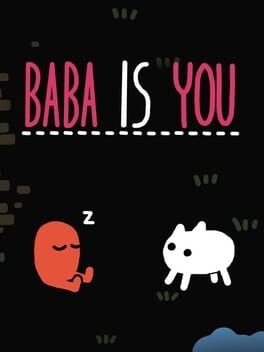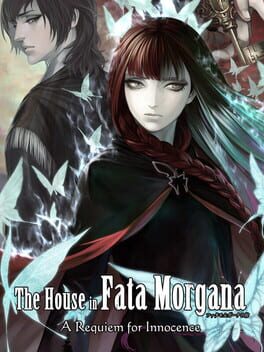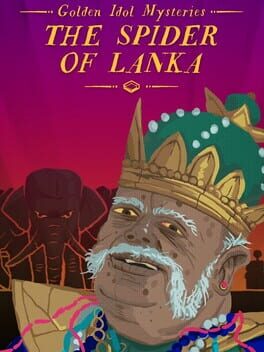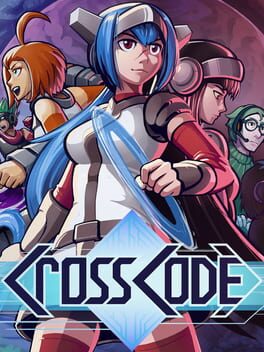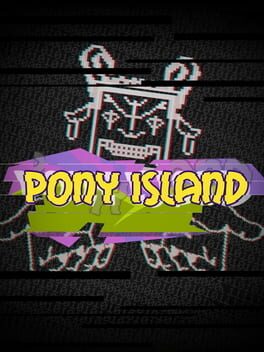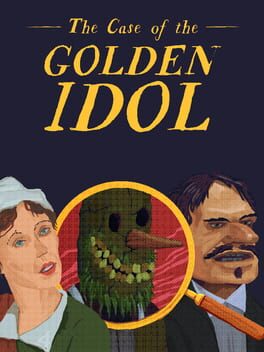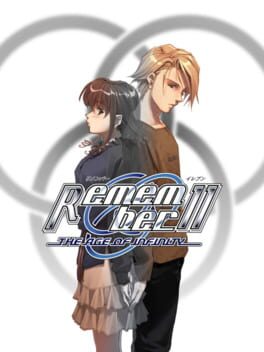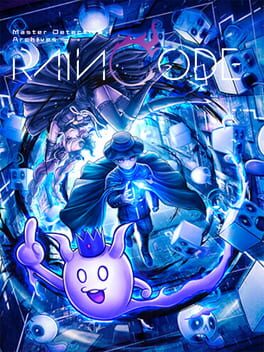phirhomu
Bio
This account is for purposes that are entirely personal. My ratings are based on how I feel about a game at the moment and are not based on deep thought or analysis. All of my reviews are surface-level subjective opinion pieces. Thank you for reading my criticism dismissal .
This account is for purposes that are entirely personal. My ratings are based on how I feel about a game at the moment and are not based on deep thought or analysis. All of my reviews are surface-level subjective opinion pieces. Thank you for reading my criticism dismissal .
Badges

1 Years of Service
Being part of the Backloggd community for 1 year

Shreked
Found the secret ogre page

Busy Day
Journaled 5+ games in a single day

N00b
Played 100+ games

Well Written
Gained 10+ likes on a single review

Noticed
Gained 3+ followers

Liked
Gained 10+ total review likes
Favorite Games
213
Total Games Played
014
Played in 2024
017
Games Backloggd
Recently Played See More
Recently Reviewed See More
On one hand, this game is an interesting thriller with mysteries layering beautifully on top of one another. On the other, a good amount of them end up being not directly resolved within the main text itself, and require looking at the TIPS to even get all the required information to understand large parts of the story (entire characters exclusively exist in them) (and with some information even being excluded in some releases). Even with all this information, you probably won't even understand it all -- you'll be referred to "the blogpost," as it's called. Even after reading this, I remain unsatisfied.
The story isn't set up for the player to understand the answers to its mysteries. Don't get me wrong, I love mystery stories that don't directly reveal all its solutions; the issue arises when key pieces of information are included in menus that most players won't check, or drafting the correct conclusion requires an offhand understanding of the exact pseudo-scientific concept that the game hints at maybe sometimes. Even the blogpost itself admits at points that they're theory-crafting with incomplete information due to how vague and seemingly contradictory some scenes are.
Many solutions don't even make any sense. Some mysteries don't even have answers. I won't go over any here for obvious spoiler reasons, but if you've played the game you probably know which ones I'm talking about.
I've been told this game is incomplete, which explains much of this. Regardless of how unsatisfied I was finishing this game, I still had fun with some twists and overall enjoyed my time playing.
The story isn't set up for the player to understand the answers to its mysteries. Don't get me wrong, I love mystery stories that don't directly reveal all its solutions; the issue arises when key pieces of information are included in menus that most players won't check, or drafting the correct conclusion requires an offhand understanding of the exact pseudo-scientific concept that the game hints at maybe sometimes. Even the blogpost itself admits at points that they're theory-crafting with incomplete information due to how vague and seemingly contradictory some scenes are.
Many solutions don't even make any sense. Some mysteries don't even have answers. I won't go over any here for obvious spoiler reasons, but if you've played the game you probably know which ones I'm talking about.
I've been told this game is incomplete, which explains much of this. Regardless of how unsatisfied I was finishing this game, I still had fun with some twists and overall enjoyed my time playing.
This is just Danganronpa but less interesting, I'm afraid. I'd love to do a large write-up on my thoughts on so many different details, but unfortunately another review on this site represents most of my thoughts extremely well: https://www.backloggd.com/u/Kusoro/review/932720/.
One point I disagree with is about the ending/overarching plot, which I personally think is an upgrade from Danganronpa -- who knew creating a story that isn't a post-hoc justification for a contrived killing game might be somewhat interesting. There were some unfair dialogue tricks to cover up some twists akin to Uchikoshi, but in the end I felt as though the ending reveals were satisfying.
ALSO -
reason we are doxxing:
They said they don't like Fubuki or Halara,
they think they're overrated.
Doesn't ship yumagami.
Doesn't ship yumahiko.
One point I disagree with is about the ending/overarching plot, which I personally think is an upgrade from Danganronpa -- who knew creating a story that isn't a post-hoc justification for a contrived killing game might be somewhat interesting. There were some unfair dialogue tricks to cover up some twists akin to Uchikoshi, but in the end I felt as though the ending reveals were satisfying.
ALSO -
reason we are doxxing:
They said they don't like Fubuki or Halara,
they think they're overrated.
Doesn't ship yumagami.
Doesn't ship yumahiko.
(Parts of this review contains discussion of spoilers, being elements not made obvious in trailers. Appropriate sections have been marked with spoiler warnings)
Tears of the Kingdom is both a triumph and a disappointment in many ways. There are many new mechanics, systems, and areas that are initially as fun to play with as they are technically impressive on a 6-year-old iPad, but many aren’t fully developed enough for them to remain entertaining throughout the 80+ hours of gameplay. Other systems that carried over from Breath of the Wild, this game’s predecessor, remain virtually untouched despite all their problems. Despite these shortcomings being seemingly ubiquitous, they’re often overlooked by most people declaring this game to be a masterpiece or a perfect sequel to Breath of the Wild. Simply posting this review that isn’t a perfect five-star score has probably already raised a few eyebrows. It’s because of these pervasive circlejerks about how perfect this game is that I’ll mainly be focusing on its negative points. Many criticisms will appear petty, but please note that I still enjoyed it overall.
As a quick TLDR: If all you care about is if fun can be found playing this game, then yes, it can. If you care beyond that, you should keep reading ahead; it’s best to be able to critically analyze the things that you enjoy, after all. The main problems (I had) with Tears of the Kingdom are its neglect to fix issues with its combat, shrines, dungeons, and rewards; its reuse of its old map; and its confusion with what type of game it wants to be. For anyone who didn’t like Breath of the Wild for any reason, Tears of the Kingdom will do absolutely nothing to change your mind.
—
There are two main ways one can look at Tears of the Kingdom (from now on abbreviated as TOTK): as a game in isolation, and as a sequel to Breath of the Wild (abbreviated BOTW). Through the former lens, a lot of criticism thrown at individual elements can be reduced down to simple “nitpicks” by fans of it. However, the latter gives extra context to these elements that have remained even after an additional six years of development. It becomes more surprising that many small issues go unaddressed to the point where they can feel like larger issues then they were before. The issues that were already large enough that there’s no way designers didn’t notice them become intentional design choices, as if they’re doubling down on awful systems.
Probably the most controversial part of BOTW was its combat, which in TOTK remains almost entirely unchanged. You have to go out of your way to avoid large systems to have any (intended) challenge in combat. Weapon durability has been slightly addressed, as will be discussed shortly. First, though, a quick unrelated list of broken yet persisting issues in combat:
-You can still heal while paused.
-Z targeting is still very janky. You press Z and hope it selects the correct enemy. If you want to quick-switch targets, good luck.
-The camera during Z-targeting still feels terrible and needs to be manually adjusted, beating the point of Z-targetting. The right stick, which ironically could’ve been used to switch between enemies, is instead reserved for fixing something that was solved 25 years ago in Ocarina of Time.
-You can only dodge when Z-targetting.
-Flurry rush is still broken, both in the game-balance sense and the game-functioning sense. It still looks for any active source of damage near Link instead of detecting if he would’ve gotten hit if he didn’t dodge, leading to some really shit timings.
-Staggering enemies is really easy. With a two-handed/“heavy” weapon, you stagger with just two hits, meaning you can infinitely stunlock most enemies by just spamming Y, including some mini-bosses. For other mini-bosses (and some full-on bosses), you can just do a basic headshot with a bow to stagger them, get a few hits, then instantly stagger them again.
-The system of armor enhancement is still unbalanced on either end. It’s still a flat damage reduction. Enhancing armor too much (which is really easy to do once you’ve started enhancing) makes the game piss-easy as you take basically no damage, and refusing to engage with it means you’ll still get two-shot by enemies even if you have 20 hearts.
-Despite a few added enemies, you’ll still be fighting basic bokoblins and moblins in 90% of encounters in the open world.
With combat gameplay being nearly identical to how it was in BOTW, it became instantly monotonous. In BOTW, it took me dozens of hours before I stopped caring for going after encampments and started avoiding encounters that weren’t absolutely necessary. With TOTK, it was the instant I left the starting area, just a couple of hours in the game, that I felt the same way. Combat just isn’t fun enough to be intrinsically rewarding, which is why they added new extrinsic rewards that are applicable through Fuse.
Which brings us to the dilemma of weapon durability, and Nintendo’s response to the controversy via the Fuse ability. Fuse attempts to solve one big problem with breakable weapons, namely its tendency to demotivate players from entering combat with lower-level encampments. In BOTW, most good weapons are acquired by exploring higher-level areas or in chests. This is why clearing encampments is a waste of materials; you use up your good weapons and get weak ones in return. In TOTK, Fuse makes the enemy drops necessary for making good weapons, particularly their horns. In each encampment you’re going to find at least one high-level enemy that gives you good horns to attach to weapons. This is an extrinsic motivation for engaging in combat that makes clearing encampments profitable, so-to-speak, in terms of your arsenal.
However, Fuse creates more problems than it does address, not to mention the many problems it leaves unaddressed. One part of Fuse that I haven’t discussed is the many other things that can be attached to weapons, as showcased in gameplay trailers. Viewing demonstrations leaves one to believe there’s much more depth to this system than just a flat damage increase, with all these cool and interesting effects that vary from hundreds of items to experiment with. This next statement might not be relatable to some, but I figure most will understand and agree with this sentiment: I never felt compelled to experiment with Fuse after leaving the starting area. The only things I ever fused beyond the first few hours were horns for extra damage on weapons, elemental materials as a replacement for the elemental arrows in BOTW, and occasionally keese eyeballs for homing arrows. Again, I’m not sure if I’m alone in this experience, but Fuse just feels like a giant system that just replaces some useful things that were already in BOTW, then adds a bunch of material combinations that are never going to see use after the early game. It’s a giant, unnecessary system that I imagine took a disproportionate amount of time to implement. Even with the problem it’s addressing, it would’ve been much simpler to do a rework on how enemies drop weapons paired with some world rebalancing.
On the note of tedium in combat, Fuse adds an extra few steps to changing weapons that are necessary to have the weapon actually be useful. When done in a fight, fusing weapons is a confusing mad dash of menuing that breaks the flow of combat. It’s baffling that there doesn’t exist an option to fuse a material to a weapon in the menu, something that seems to be possible on arrows, and despite Link’s ability to also eat 20 full-course meals in the menu. Instead, if you want to fuse a material to a weapon, you must:
1. Open the menu.
2. Go to the materials tab, search through the hundreds of materials you have for the thing you want, select it, then drop it.
3. Go to the weapons tab, select then equip the weapon you want to fuse, then close the menu.
4. Hold the L button so you can select the fuse ability, then release.
5. Press Y to fuse it.
Go through all of these steps just to attach a bokoblin horn to a claymore that’s going to break in 15 hits. Spread this throughout an 80 hour game, it gets tiring really quickly. Even if they streamlined the process a little by making fusion possible in the menu, it would still be too much effort on the player’s behalf for a system that gives so little. Remember that switching weapons used to just be a couple of basic inputs, one simple menu designed to feel clean and non-interruptive.
Next on the laundry list of things Nintendo developers are doubling-down on is their system of shrines and dungeons. Shrines in this game have the same issues that the ones in BOTW did: they lack any substance. All shrines are far too short to introduce and properly develop on any idea or mechanic. In fact, in some ways they’re worse than how they were in BOTW.
As of writing this, I’ve completed roughly four-fifths of the shrines in TOTK. I plan on playing the last fifth, and will update this if any of them are notable. However, of that large sample size, not a single shrine puzzle has made me think for longer than a couple of seconds, and no shrine has persisted beyond just having a few (1-3) of these basic puzzles. Even in BOTW, there were some longer shrines that felt like they had some proper content and had more pieces to interact with, but not a single TOTK shrine has met this amount of content. Almost every shrine gives a basic introductory puzzle, one that is a basic application of a hand ability, then if you’re lucky another puzzle that uses the same mechanic in a marginally more complicated way, then the shrine is done. In almost any other game, these shrines would be starter puzzles in a longer gauntlet in which it’s fleshed out through several more situations, then the player is tested on their knowledge in one final puzzle that puts multiple things together. With shrines, though, this never happens.
Another thing that seemed to be overlooked is how much of these shrine puzzles can be cheesed with a simple ultrahand+recall combination. I’m all for puzzles having multiple solutions, given that these solutions are as complex or creative as the intended solution, but it’s definitely gone way overboard when such a simple interaction between hand abilities is so widely-applicable and breaks so many puzzles. Have a gap you want to cross? Want to scale a giant wall? Want to easily carry an item across a pit? It felt like half of puzzles required the player to not engage with such a simple interaction for them to have fun actually solving it.
The combat shrines, one the other hand, are much better than the ones in BOTW. While those where largely copy+pasted shrines with the exact same enemy in slightly different arenas, TOTK’s combat shrines include a lot more variety. The most immediately noticeable difference is the removal of Link’s gear, just like Eventide Island in BOTW. This separation from BOTW’s reliance on gear makes these shrines much more enjoyable for a number of reasons. For one, you aren’t using up the durability of your personal weapons. For another, the struggle to scrap whatever you can together with very little materials is inherently much more interesting than any late-game combat. It incentivizes the player to act more creatively rather than rely on a simple number advantage.
The second change made to combat shrines is the fact you’re fighting multiple enemies spread throughout a varying layout. This format compliments the focus on a more creative playstyle, as you’ll be picking up better gear as you continue to fight. It also allows more variety between combat shrines, as a fortress with multiple enemies is much easier to redesign than one arena for one foe. These shrines still suffer from the problems with combat, but it does feel significantly more dynamic. It took me much longer before I recognized that I was falling into the same rhythm with these shrines when picking off enemies, fusing their horns to weapons, then finishing off the rest of the group. While these shrines ultimately became predictable, it definitely took them a lot longer than the ones in BOTW, and their efforts to make these combat shrines better has made me partially grateful and partially wondering why that effort can’t also go into other shrines.
There’s one other type of shrine to briefly discuss, and those are the ones which contain a puzzle or challenge outside the shrine, and once you enter it’s just a chest and an orb. These can be pretty hit-or-miss. Like shrine challenges themselves, most shrine quests are extremely lackluster. In a surprisingly large number of cases, shrines can be found without any outside challenge and they would be empty; the shrine quest can be bypassed by simply exploring. Scenarios like that should never happen, and despite the same problem occurring in BOTW, they still exist six years later.
One common type of shrine challenges are a copy+pasted fetch quest for a small crystal, which from what I’ve seen online, not too many people enjoy. I may be in the minority that actually enjoyed the concept of these challenges, being to create an ultrahand vehicle used to traverse some rough yet unique terrain. In application, though, these shrines quests end up underwhelming, as these challenges are rarely difficult or unique enough to warrant any extra attention, making them just as vapid and uninspired as the rest.
Maybe it’s my fault for considering the shrines to be “main content” because of the fancy titles they’re given and how they’re often associated with progression. I’m not even sure at this point if the shrines can even be considered “main content” with how little thought most of them are given, despite making up maybe half (or more) of the playtime of TOTK. It’s a giant collectathon of optional content (which is arguably detracting from attention given to main content). Regardless of how it’s framed, though, shrines are an absolute drag to play.
(Gameplay spoilers ahead)
The dungeons (or “temples”) in TOTK are roughly the same quality as they were in BOTW. They’re all small and simple, featuring some puzzles but not too many. Despite what some may say online, they are not a return to the “old Zelda style of dungeons” at all. If anything’s changed from BOTW, they’ve added unique theming to them (which is a plus), but also removed the interactivity that made the Divine Beasts interesting.
The structure of temples still centers around activating a few terminals spread around one area. Puzzles leading up to the terminals are disconnected, and are roughly as complex as one shrine (that is to say not complex at all). What makes these temples more interesting than just four shrines taped together is the interconnectedness of the whole area. The best examples of this are the Wind and Electric temples. The Fire temple follows this design philosophy to its own failure; its open structure makes it very cheesable by simply climbing (something that many who’ve played it have admitted to doing). The Water temple is just boring. The Spirit temple has absolutely no connecting structure and best exemplifies the notion that a temple is really just four shrines in a trenchcoat.
The dungeon bosses are undoubtedly a step up from BOTW. They’re all unique and themed, which is really all it takes to make it better than the -blights. One thing that taints these bossfights, though, is their reliance on the spirit abilities.
I have absolutely no clue what the developers were thinking with the spirit abilities. I don’t even think the most hardcore TOTK apologists are defending how awful their implementations are. It’s a constant battle between you wanting to use an ability and whatever the AI is doing. The most painfully bad example is in the Electric temple with Queen Gibdo, a boss which is invulnerable until struck with Riju’s lightning ability, and yet Riju will constantly run away from Link, trying to attack Queen Gibdo to absolutely no effect. It’s only worsened in the second phase when she also pursues the minion gibdos.
(End of gameplay spoilers)
Now that I’ve talked about the main problems with the new content itself, I’d like to discuss the topic of map reuse. Some reading this may already be rolling their eyes just reading this introduction to the section, but I will try to explain more in-depth to those who don’t fully understand why the reuse taints the game. A common comparison that’s drawn by defenders of it is that Majora’s Mask also heavily reused assets from Ocarina of Time, and yet that still holds to be a (widely-considered) good game. However, this analogy doesn’t work on a fundamental level as it misunderstands the argument being made.
The issue with reusing the map from BOTW isn’t the mere fact that it reuses assets. In fact, reusing assets is a great thing where possible and when it doesn’t interfere with gameplay. Majora’s Mask greatly benefitted from it; not only did its development have a tight budget and schedule, it also was trying to be experimental with the tone and format. Despite using the same engine and similar assets, Majora’s Mask was still able to create its own unique identity and feels like a distinct game from Ocarina of Time.
Problems arise in the case of BOTW/TOTK, as they are both open-world games, games that thrive in exploration and novelty, and yet the asset being reused is the map that you explore. Sure, individual locations may be altered, but the world that connects them all and overall geography is all too familiar, making the exploration dry and predictable. Throughout the majority of my playthrough, I couldn’t help but feel like I was still just playing BOTW, but with maybe a few mods. The player will never experience the same feelings as exploring the world for the first time.
(Map/gameplay spoilers ahead)
One may point out the fact that there are two more layers, and thus tripling the number of maps added. Unfortunately, both remain to be exceedingly underwhelming in different ways. The sky layer has very little in it. It’s disappointing that by far the largest island (and area of content) in the sky laayer is the tutorial island. The rest of the sky (save for a couple main quest temples) are sparse archipelagos of small copy+pasted filler content islands. Despite how much the sky is hyped in the trailers, very little effort was put into implementing… anything up there. There is next to no reason anyone should ever visit the sky layer outside of the occasional main quest detour.
The depths layer, on the other hand, was probably the most interesting part of this game for me, at least for the first third of my playtime. It was unlike anything in BOTW: dark, oppressive, dangerous, and yet still so expansive. Realizing that the depths expanded the entire world made me instantly determined to explore it all, since it was the most interesting part of the game. Unluckily for me, there was barely any content down there either. The depths is literally just the surface’s topography inverted, with the same procedurally-generated biome lazily added on top of the entire layer. Activating lightroots was fun for the first 15 or so, but it rapidly became draining as it remained the same loop with no rewards to show for it. Finding the Spirit Temple early had me excited that I’d finally gotten the payoff, except it wouldn’t let me interact with anything as I hadn’t progressed the story enough. Largely, the depths layer is another waste of time with barely any content to match its size.
(End of map/gameplay spoilers)
To conclude this review, I want to discuss TOTK’s apparent identity crisis. While I love reimaginations of the traditional Legend of Zelda formula, I’m worried that the latest iteration creates conflict with the rest of the game, namely, the Ultrahand vehicle creation. Now, don’t get me wrong, I love sandbox games, as well as vehicle-creation games. I also love open-world games and puzzle games. The thing is, these things don’t work well together. As cool as it is to make a flying machine that can fly miles above the ground, it’s also me avoiding the content, not to mention the amount of time it takes to create something. There are so many time and resource expenses to just experiment with a system that might sometimes be useful maybe in a handful of situations, as if the game is punishing players for wasting their times with it. In 99% of cases, when focusing on the content of the game, making an Ultrahand contraption is the worst possible option.
Even though Ultrahand and the overall physics engine is just a small footnote in the overall play experience, it appears to be an aspect of this game that everyone praises, that everyone points to and exclaims that it’s why this game is a masterpiece. They’ll point to clips online of someone making a resource-expensive oversized contraption, and point to the amount of creative freedom the game provides in that specific aspect. What they neglect to point out is that no reasonable person will ever make a contraption that sophisticated during their normal playthrough, as it’s a complete waste of time and resources, and that the only reason why people made those contraptions was to repost them on the internet for clout. No matter what people tell you, the physics engine, while robust, adds next to nothing to the actual game-part of the game.
Anyways, I’m too lazy at this point to write an actual conclusion to this review, just like the developers were too lazy to add anything substantially new to this game. I wrote like 2/3rds of it 3 months ago, aiming for it to be one of the first reviews on Backloggd, but I forgot about it until today. I hope you enjoyed reading my incoherent ramblings.
Tears of the Kingdom is both a triumph and a disappointment in many ways. There are many new mechanics, systems, and areas that are initially as fun to play with as they are technically impressive on a 6-year-old iPad, but many aren’t fully developed enough for them to remain entertaining throughout the 80+ hours of gameplay. Other systems that carried over from Breath of the Wild, this game’s predecessor, remain virtually untouched despite all their problems. Despite these shortcomings being seemingly ubiquitous, they’re often overlooked by most people declaring this game to be a masterpiece or a perfect sequel to Breath of the Wild. Simply posting this review that isn’t a perfect five-star score has probably already raised a few eyebrows. It’s because of these pervasive circlejerks about how perfect this game is that I’ll mainly be focusing on its negative points. Many criticisms will appear petty, but please note that I still enjoyed it overall.
As a quick TLDR: If all you care about is if fun can be found playing this game, then yes, it can. If you care beyond that, you should keep reading ahead; it’s best to be able to critically analyze the things that you enjoy, after all. The main problems (I had) with Tears of the Kingdom are its neglect to fix issues with its combat, shrines, dungeons, and rewards; its reuse of its old map; and its confusion with what type of game it wants to be. For anyone who didn’t like Breath of the Wild for any reason, Tears of the Kingdom will do absolutely nothing to change your mind.
—
There are two main ways one can look at Tears of the Kingdom (from now on abbreviated as TOTK): as a game in isolation, and as a sequel to Breath of the Wild (abbreviated BOTW). Through the former lens, a lot of criticism thrown at individual elements can be reduced down to simple “nitpicks” by fans of it. However, the latter gives extra context to these elements that have remained even after an additional six years of development. It becomes more surprising that many small issues go unaddressed to the point where they can feel like larger issues then they were before. The issues that were already large enough that there’s no way designers didn’t notice them become intentional design choices, as if they’re doubling down on awful systems.
Probably the most controversial part of BOTW was its combat, which in TOTK remains almost entirely unchanged. You have to go out of your way to avoid large systems to have any (intended) challenge in combat. Weapon durability has been slightly addressed, as will be discussed shortly. First, though, a quick unrelated list of broken yet persisting issues in combat:
-You can still heal while paused.
-Z targeting is still very janky. You press Z and hope it selects the correct enemy. If you want to quick-switch targets, good luck.
-The camera during Z-targeting still feels terrible and needs to be manually adjusted, beating the point of Z-targetting. The right stick, which ironically could’ve been used to switch between enemies, is instead reserved for fixing something that was solved 25 years ago in Ocarina of Time.
-You can only dodge when Z-targetting.
-Flurry rush is still broken, both in the game-balance sense and the game-functioning sense. It still looks for any active source of damage near Link instead of detecting if he would’ve gotten hit if he didn’t dodge, leading to some really shit timings.
-Staggering enemies is really easy. With a two-handed/“heavy” weapon, you stagger with just two hits, meaning you can infinitely stunlock most enemies by just spamming Y, including some mini-bosses. For other mini-bosses (and some full-on bosses), you can just do a basic headshot with a bow to stagger them, get a few hits, then instantly stagger them again.
-The system of armor enhancement is still unbalanced on either end. It’s still a flat damage reduction. Enhancing armor too much (which is really easy to do once you’ve started enhancing) makes the game piss-easy as you take basically no damage, and refusing to engage with it means you’ll still get two-shot by enemies even if you have 20 hearts.
-Despite a few added enemies, you’ll still be fighting basic bokoblins and moblins in 90% of encounters in the open world.
With combat gameplay being nearly identical to how it was in BOTW, it became instantly monotonous. In BOTW, it took me dozens of hours before I stopped caring for going after encampments and started avoiding encounters that weren’t absolutely necessary. With TOTK, it was the instant I left the starting area, just a couple of hours in the game, that I felt the same way. Combat just isn’t fun enough to be intrinsically rewarding, which is why they added new extrinsic rewards that are applicable through Fuse.
Which brings us to the dilemma of weapon durability, and Nintendo’s response to the controversy via the Fuse ability. Fuse attempts to solve one big problem with breakable weapons, namely its tendency to demotivate players from entering combat with lower-level encampments. In BOTW, most good weapons are acquired by exploring higher-level areas or in chests. This is why clearing encampments is a waste of materials; you use up your good weapons and get weak ones in return. In TOTK, Fuse makes the enemy drops necessary for making good weapons, particularly their horns. In each encampment you’re going to find at least one high-level enemy that gives you good horns to attach to weapons. This is an extrinsic motivation for engaging in combat that makes clearing encampments profitable, so-to-speak, in terms of your arsenal.
However, Fuse creates more problems than it does address, not to mention the many problems it leaves unaddressed. One part of Fuse that I haven’t discussed is the many other things that can be attached to weapons, as showcased in gameplay trailers. Viewing demonstrations leaves one to believe there’s much more depth to this system than just a flat damage increase, with all these cool and interesting effects that vary from hundreds of items to experiment with. This next statement might not be relatable to some, but I figure most will understand and agree with this sentiment: I never felt compelled to experiment with Fuse after leaving the starting area. The only things I ever fused beyond the first few hours were horns for extra damage on weapons, elemental materials as a replacement for the elemental arrows in BOTW, and occasionally keese eyeballs for homing arrows. Again, I’m not sure if I’m alone in this experience, but Fuse just feels like a giant system that just replaces some useful things that were already in BOTW, then adds a bunch of material combinations that are never going to see use after the early game. It’s a giant, unnecessary system that I imagine took a disproportionate amount of time to implement. Even with the problem it’s addressing, it would’ve been much simpler to do a rework on how enemies drop weapons paired with some world rebalancing.
On the note of tedium in combat, Fuse adds an extra few steps to changing weapons that are necessary to have the weapon actually be useful. When done in a fight, fusing weapons is a confusing mad dash of menuing that breaks the flow of combat. It’s baffling that there doesn’t exist an option to fuse a material to a weapon in the menu, something that seems to be possible on arrows, and despite Link’s ability to also eat 20 full-course meals in the menu. Instead, if you want to fuse a material to a weapon, you must:
1. Open the menu.
2. Go to the materials tab, search through the hundreds of materials you have for the thing you want, select it, then drop it.
3. Go to the weapons tab, select then equip the weapon you want to fuse, then close the menu.
4. Hold the L button so you can select the fuse ability, then release.
5. Press Y to fuse it.
Go through all of these steps just to attach a bokoblin horn to a claymore that’s going to break in 15 hits. Spread this throughout an 80 hour game, it gets tiring really quickly. Even if they streamlined the process a little by making fusion possible in the menu, it would still be too much effort on the player’s behalf for a system that gives so little. Remember that switching weapons used to just be a couple of basic inputs, one simple menu designed to feel clean and non-interruptive.
Next on the laundry list of things Nintendo developers are doubling-down on is their system of shrines and dungeons. Shrines in this game have the same issues that the ones in BOTW did: they lack any substance. All shrines are far too short to introduce and properly develop on any idea or mechanic. In fact, in some ways they’re worse than how they were in BOTW.
As of writing this, I’ve completed roughly four-fifths of the shrines in TOTK. I plan on playing the last fifth, and will update this if any of them are notable. However, of that large sample size, not a single shrine puzzle has made me think for longer than a couple of seconds, and no shrine has persisted beyond just having a few (1-3) of these basic puzzles. Even in BOTW, there were some longer shrines that felt like they had some proper content and had more pieces to interact with, but not a single TOTK shrine has met this amount of content. Almost every shrine gives a basic introductory puzzle, one that is a basic application of a hand ability, then if you’re lucky another puzzle that uses the same mechanic in a marginally more complicated way, then the shrine is done. In almost any other game, these shrines would be starter puzzles in a longer gauntlet in which it’s fleshed out through several more situations, then the player is tested on their knowledge in one final puzzle that puts multiple things together. With shrines, though, this never happens.
Another thing that seemed to be overlooked is how much of these shrine puzzles can be cheesed with a simple ultrahand+recall combination. I’m all for puzzles having multiple solutions, given that these solutions are as complex or creative as the intended solution, but it’s definitely gone way overboard when such a simple interaction between hand abilities is so widely-applicable and breaks so many puzzles. Have a gap you want to cross? Want to scale a giant wall? Want to easily carry an item across a pit? It felt like half of puzzles required the player to not engage with such a simple interaction for them to have fun actually solving it.
The combat shrines, one the other hand, are much better than the ones in BOTW. While those where largely copy+pasted shrines with the exact same enemy in slightly different arenas, TOTK’s combat shrines include a lot more variety. The most immediately noticeable difference is the removal of Link’s gear, just like Eventide Island in BOTW. This separation from BOTW’s reliance on gear makes these shrines much more enjoyable for a number of reasons. For one, you aren’t using up the durability of your personal weapons. For another, the struggle to scrap whatever you can together with very little materials is inherently much more interesting than any late-game combat. It incentivizes the player to act more creatively rather than rely on a simple number advantage.
The second change made to combat shrines is the fact you’re fighting multiple enemies spread throughout a varying layout. This format compliments the focus on a more creative playstyle, as you’ll be picking up better gear as you continue to fight. It also allows more variety between combat shrines, as a fortress with multiple enemies is much easier to redesign than one arena for one foe. These shrines still suffer from the problems with combat, but it does feel significantly more dynamic. It took me much longer before I recognized that I was falling into the same rhythm with these shrines when picking off enemies, fusing their horns to weapons, then finishing off the rest of the group. While these shrines ultimately became predictable, it definitely took them a lot longer than the ones in BOTW, and their efforts to make these combat shrines better has made me partially grateful and partially wondering why that effort can’t also go into other shrines.
There’s one other type of shrine to briefly discuss, and those are the ones which contain a puzzle or challenge outside the shrine, and once you enter it’s just a chest and an orb. These can be pretty hit-or-miss. Like shrine challenges themselves, most shrine quests are extremely lackluster. In a surprisingly large number of cases, shrines can be found without any outside challenge and they would be empty; the shrine quest can be bypassed by simply exploring. Scenarios like that should never happen, and despite the same problem occurring in BOTW, they still exist six years later.
One common type of shrine challenges are a copy+pasted fetch quest for a small crystal, which from what I’ve seen online, not too many people enjoy. I may be in the minority that actually enjoyed the concept of these challenges, being to create an ultrahand vehicle used to traverse some rough yet unique terrain. In application, though, these shrines quests end up underwhelming, as these challenges are rarely difficult or unique enough to warrant any extra attention, making them just as vapid and uninspired as the rest.
Maybe it’s my fault for considering the shrines to be “main content” because of the fancy titles they’re given and how they’re often associated with progression. I’m not even sure at this point if the shrines can even be considered “main content” with how little thought most of them are given, despite making up maybe half (or more) of the playtime of TOTK. It’s a giant collectathon of optional content (which is arguably detracting from attention given to main content). Regardless of how it’s framed, though, shrines are an absolute drag to play.
(Gameplay spoilers ahead)
The dungeons (or “temples”) in TOTK are roughly the same quality as they were in BOTW. They’re all small and simple, featuring some puzzles but not too many. Despite what some may say online, they are not a return to the “old Zelda style of dungeons” at all. If anything’s changed from BOTW, they’ve added unique theming to them (which is a plus), but also removed the interactivity that made the Divine Beasts interesting.
The structure of temples still centers around activating a few terminals spread around one area. Puzzles leading up to the terminals are disconnected, and are roughly as complex as one shrine (that is to say not complex at all). What makes these temples more interesting than just four shrines taped together is the interconnectedness of the whole area. The best examples of this are the Wind and Electric temples. The Fire temple follows this design philosophy to its own failure; its open structure makes it very cheesable by simply climbing (something that many who’ve played it have admitted to doing). The Water temple is just boring. The Spirit temple has absolutely no connecting structure and best exemplifies the notion that a temple is really just four shrines in a trenchcoat.
The dungeon bosses are undoubtedly a step up from BOTW. They’re all unique and themed, which is really all it takes to make it better than the -blights. One thing that taints these bossfights, though, is their reliance on the spirit abilities.
I have absolutely no clue what the developers were thinking with the spirit abilities. I don’t even think the most hardcore TOTK apologists are defending how awful their implementations are. It’s a constant battle between you wanting to use an ability and whatever the AI is doing. The most painfully bad example is in the Electric temple with Queen Gibdo, a boss which is invulnerable until struck with Riju’s lightning ability, and yet Riju will constantly run away from Link, trying to attack Queen Gibdo to absolutely no effect. It’s only worsened in the second phase when she also pursues the minion gibdos.
(End of gameplay spoilers)
Now that I’ve talked about the main problems with the new content itself, I’d like to discuss the topic of map reuse. Some reading this may already be rolling their eyes just reading this introduction to the section, but I will try to explain more in-depth to those who don’t fully understand why the reuse taints the game. A common comparison that’s drawn by defenders of it is that Majora’s Mask also heavily reused assets from Ocarina of Time, and yet that still holds to be a (widely-considered) good game. However, this analogy doesn’t work on a fundamental level as it misunderstands the argument being made.
The issue with reusing the map from BOTW isn’t the mere fact that it reuses assets. In fact, reusing assets is a great thing where possible and when it doesn’t interfere with gameplay. Majora’s Mask greatly benefitted from it; not only did its development have a tight budget and schedule, it also was trying to be experimental with the tone and format. Despite using the same engine and similar assets, Majora’s Mask was still able to create its own unique identity and feels like a distinct game from Ocarina of Time.
Problems arise in the case of BOTW/TOTK, as they are both open-world games, games that thrive in exploration and novelty, and yet the asset being reused is the map that you explore. Sure, individual locations may be altered, but the world that connects them all and overall geography is all too familiar, making the exploration dry and predictable. Throughout the majority of my playthrough, I couldn’t help but feel like I was still just playing BOTW, but with maybe a few mods. The player will never experience the same feelings as exploring the world for the first time.
(Map/gameplay spoilers ahead)
One may point out the fact that there are two more layers, and thus tripling the number of maps added. Unfortunately, both remain to be exceedingly underwhelming in different ways. The sky layer has very little in it. It’s disappointing that by far the largest island (and area of content) in the sky laayer is the tutorial island. The rest of the sky (save for a couple main quest temples) are sparse archipelagos of small copy+pasted filler content islands. Despite how much the sky is hyped in the trailers, very little effort was put into implementing… anything up there. There is next to no reason anyone should ever visit the sky layer outside of the occasional main quest detour.
The depths layer, on the other hand, was probably the most interesting part of this game for me, at least for the first third of my playtime. It was unlike anything in BOTW: dark, oppressive, dangerous, and yet still so expansive. Realizing that the depths expanded the entire world made me instantly determined to explore it all, since it was the most interesting part of the game. Unluckily for me, there was barely any content down there either. The depths is literally just the surface’s topography inverted, with the same procedurally-generated biome lazily added on top of the entire layer. Activating lightroots was fun for the first 15 or so, but it rapidly became draining as it remained the same loop with no rewards to show for it. Finding the Spirit Temple early had me excited that I’d finally gotten the payoff, except it wouldn’t let me interact with anything as I hadn’t progressed the story enough. Largely, the depths layer is another waste of time with barely any content to match its size.
(End of map/gameplay spoilers)
To conclude this review, I want to discuss TOTK’s apparent identity crisis. While I love reimaginations of the traditional Legend of Zelda formula, I’m worried that the latest iteration creates conflict with the rest of the game, namely, the Ultrahand vehicle creation. Now, don’t get me wrong, I love sandbox games, as well as vehicle-creation games. I also love open-world games and puzzle games. The thing is, these things don’t work well together. As cool as it is to make a flying machine that can fly miles above the ground, it’s also me avoiding the content, not to mention the amount of time it takes to create something. There are so many time and resource expenses to just experiment with a system that might sometimes be useful maybe in a handful of situations, as if the game is punishing players for wasting their times with it. In 99% of cases, when focusing on the content of the game, making an Ultrahand contraption is the worst possible option.
Even though Ultrahand and the overall physics engine is just a small footnote in the overall play experience, it appears to be an aspect of this game that everyone praises, that everyone points to and exclaims that it’s why this game is a masterpiece. They’ll point to clips online of someone making a resource-expensive oversized contraption, and point to the amount of creative freedom the game provides in that specific aspect. What they neglect to point out is that no reasonable person will ever make a contraption that sophisticated during their normal playthrough, as it’s a complete waste of time and resources, and that the only reason why people made those contraptions was to repost them on the internet for clout. No matter what people tell you, the physics engine, while robust, adds next to nothing to the actual game-part of the game.
Anyways, I’m too lazy at this point to write an actual conclusion to this review, just like the developers were too lazy to add anything substantially new to this game. I wrote like 2/3rds of it 3 months ago, aiming for it to be one of the first reviews on Backloggd, but I forgot about it until today. I hope you enjoyed reading my incoherent ramblings.




